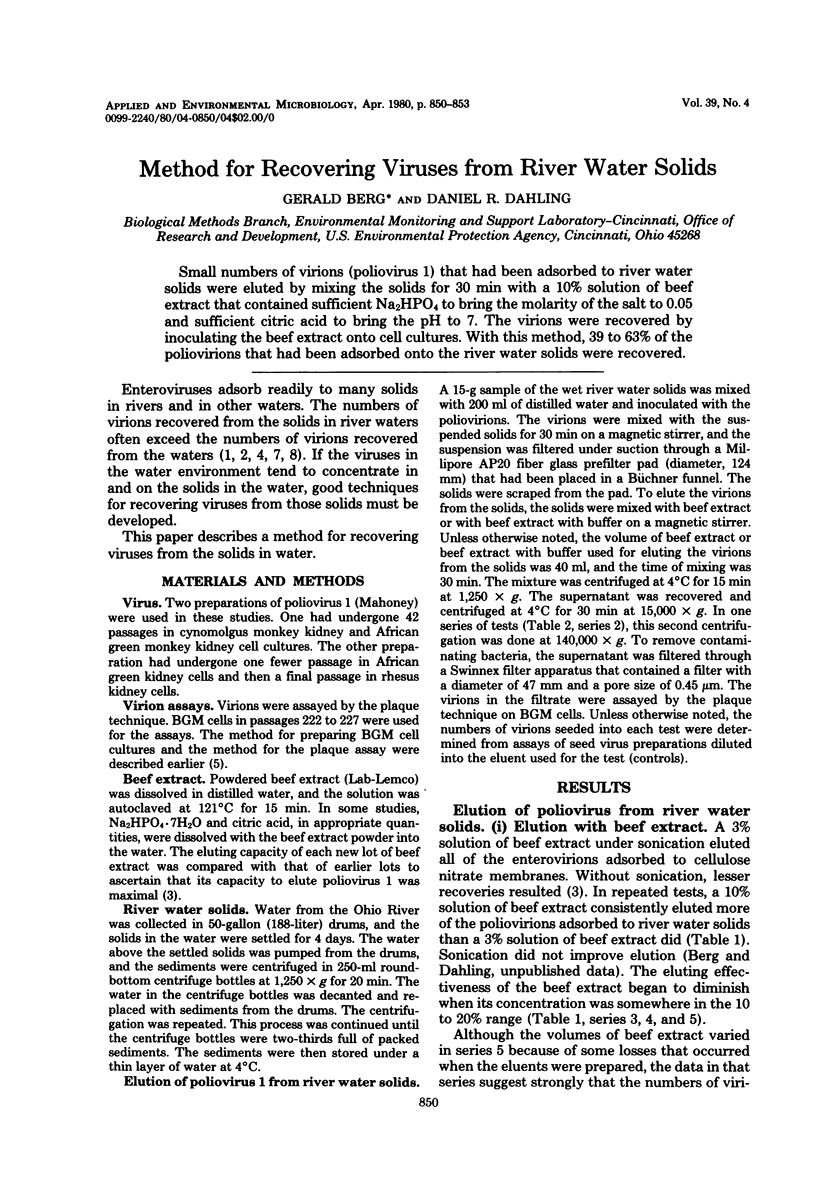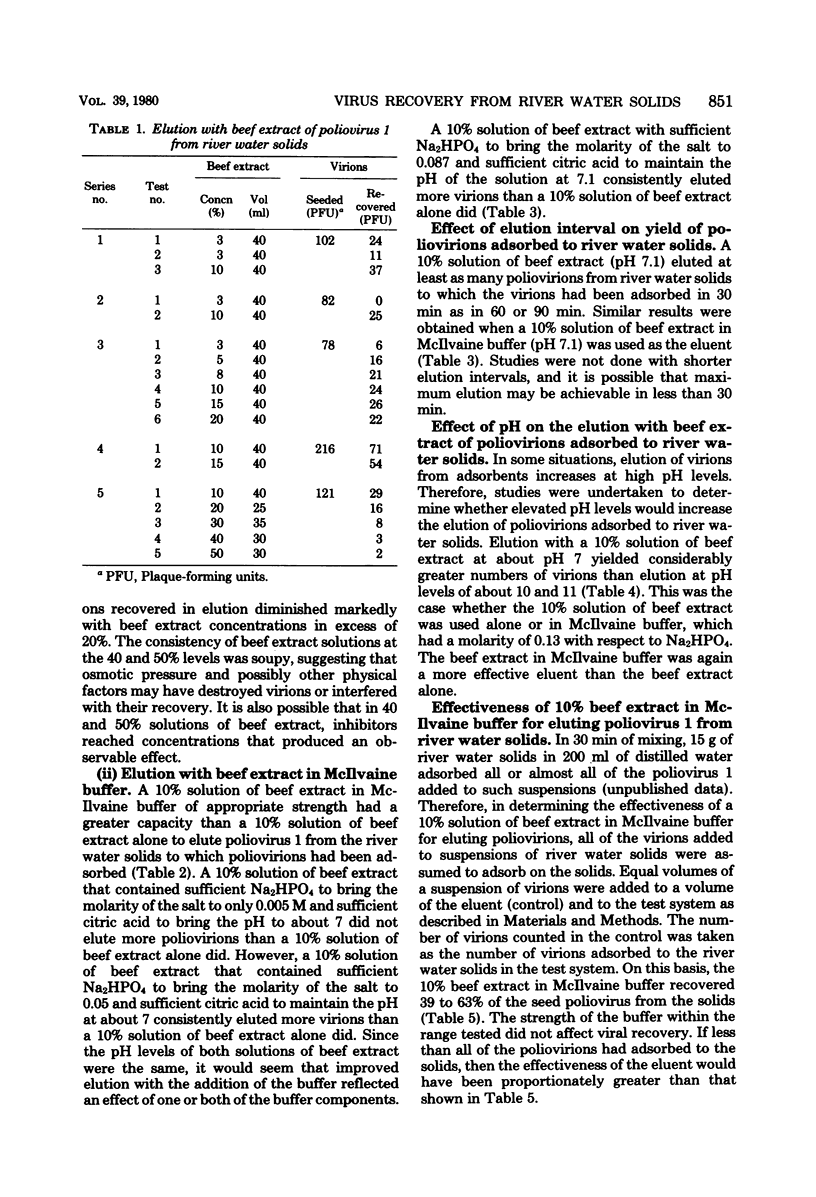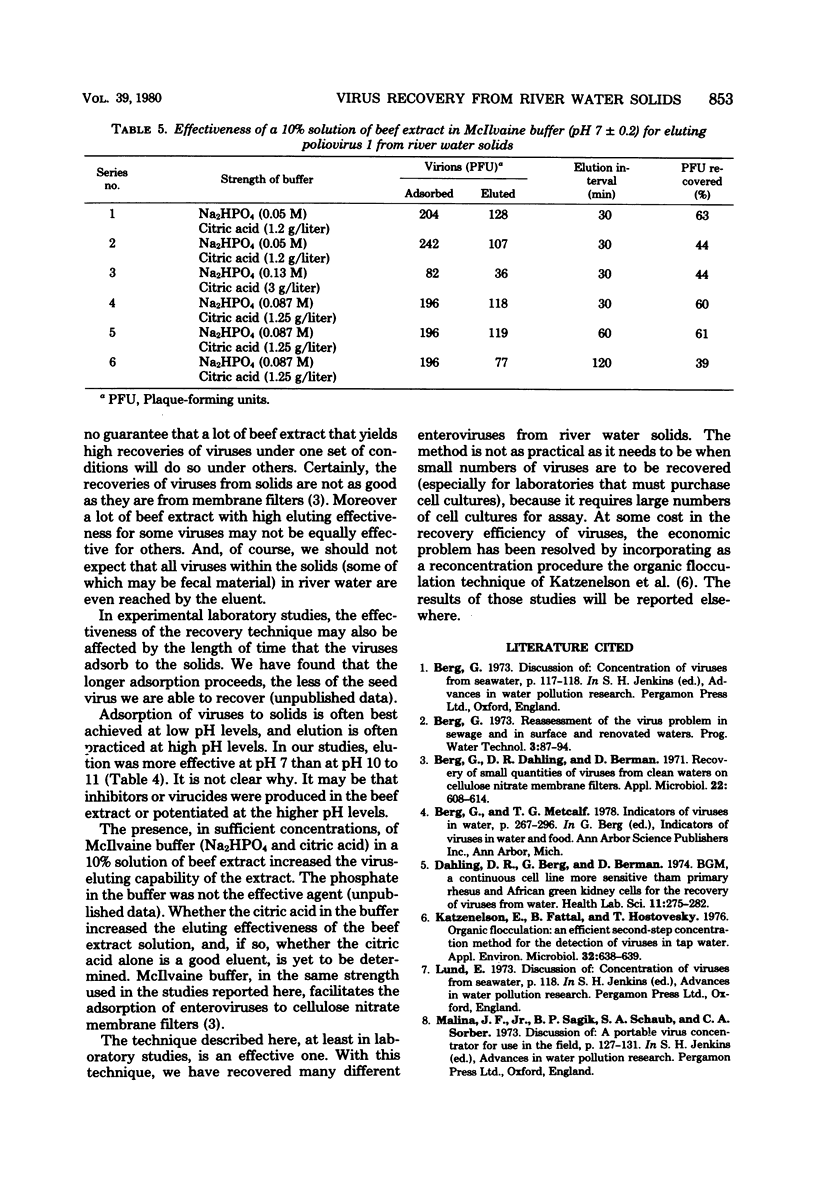Abstract
Small numbers of virions (poliovirus 1) that had been adsorbed to river water solids were eluted by mixing the solids for 30 min with a 10% solution of beef extract that contained sufficient Na2HPO4 to bring the molarity of the salt to 0.05 and sufficient citric acid to bring the pH to 7. The virions were recovered by inoculating the beef extract onto cell cultures. With this method, 39 to 63% of the poliovirions that had been adsorbed onto the river water solids were recovered.
Full text
PDF



Selected References
These references are in PubMed. This may not be the complete list of references from this article.
- Berg G., Dahling D. R., Berman D. Recovery of small quantities of viruses from clean waters on cellulose nitrate membrane filters. Appl Microbiol. 1971 Oct;22(4):608–614. doi: 10.1128/am.22.4.608-614.1971. [DOI] [PMC free article] [PubMed] [Google Scholar]
- Dahling D. R., Berg G., Berman D. BGM, a continuous cell line more sensitive than primary rhesus and African green kidney cells for the recovery of viruses from water. Health Lab Sci. 1974 Oct;11(4):275–282. [PubMed] [Google Scholar]
- Katzenelson E., Fattal B., Hostovesky T. Organic flocculation: an efficient second-step concentration method for the detection of viruses in tap water. Appl Environ Microbiol. 1976 Oct;32(4):638–639. doi: 10.1128/aem.32.4.638-639.1976. [DOI] [PMC free article] [PubMed] [Google Scholar]


